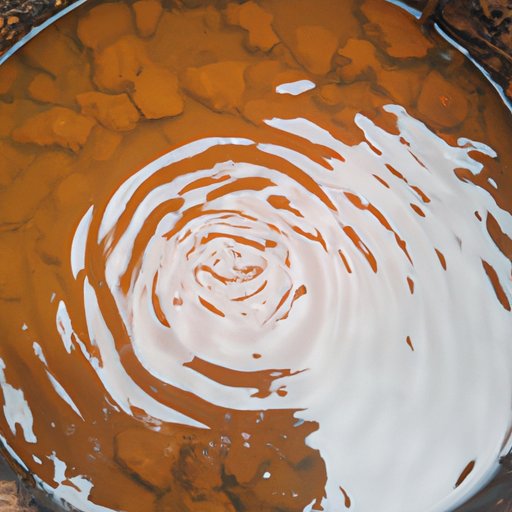Introduction
Well water is any water that has been drawn from an underground aquifer by a mechanical pump. It is generally considered to be one of the purest forms of water available since it is filtered through layers of sediment and rock. While this is true, there are still some issues that can arise with well water, such as discoloration. One of the most common problems is brown well water.

The Science Behind Brown Well Water
There are a few different ways that well water can become discolored. The first is through chemical reactions. As water passes through rocks and soil, certain minerals and elements can be dissolved in the water. These can then react with other substances in the water, such as oxygen or chlorine, and cause it to change color.
The second way that well water can become discolored is through sediment and minerals. If there is a high concentration of these in the water, they can settle out and form sediment that is visible when the water is drawn. This sediment can range in color from yellow to brown, depending on the type of minerals present.
How to Diagnose and Treat Brown Well Water
The first step in diagnosing and treating brown well water is to test it. Homeowners should use a water testing kit to determine what type of contaminants are in their water. Testing kits are available at most hardware stores and will provide information on the levels of various minerals and elements in the water.
Once the results of the test are known, homeowners can identify the cause of the brown water and determine how to treat it. Depending on the type of contaminants present, the treatment may involve adding a chemical to the water to neutralize it, installing a filter system, or using a home remedy such as a chlorine shock.
Common Causes of Brown Well Water
One of the most common causes of brown well water is corrosion. This occurs when the pipes used to draw water from the ground become corroded due to age or mineral content in the water. Corrosion can cause the pipes to leach iron into the water, which can turn it brown.
Another common cause of brown well water is iron bacteria. These tiny organisms feed on iron and other minerals in the water and can cause the water to turn a reddish-brown color. Sulfur bacteria are also a problem, as they produce sulfur compounds that can discolor the water.

DIY Solutions for Brown Well Water
Fortunately, there are several DIY solutions for brown well water. The first is a water softener. These systems use salt to remove minerals from the water, which can help reduce the amount of discoloration. Another solution is an iron filter, which uses a special filter media to remove iron from the water.
Finally, an acid neutralizer can be installed to raise the pH level of the water. This helps to prevent corrosion and can reduce the amount of iron and other minerals in the water. All of these systems can be purchased online or at a local hardware store.

Home Remedies for Brown Well Water
In addition to purchasing a filtration system, there are several home remedies that can be used to treat brown well water. Chlorine shock is a popular option, as it kills bacteria and helps to break down organic matter that can discolor the water. An activated carbon filter can also be used to remove chemicals and minerals from the water.

The Benefits of Clean Well Water
Having clean well water offers many benefits. It is healthier than water from a public water supply, as it is not exposed to the same pollutants. Additionally, it tastes better and is free of unpleasant odors. Finally, having clean well water means that homeowners don’t have to worry about discoloration or other aesthetic issues.
Steps for Testing and Treating Brown Well Water
If you are dealing with brown well water, there are a few steps you can take to diagnose and treat the problem. First, you should test the water to determine the cause of the discoloration. Once the cause is identified, you can implement a treatment plan, such as installing a filter system or using a home remedy.
Conclusion
Brown well water can be a nuisance for homeowners. Fortunately, there are several steps that can be taken to diagnose and treat the problem. The most common causes of brown well water are corrosion, iron bacteria, and sulfur bacteria. DIY solutions such as water softeners, iron filters, and acid neutralizers can be used to treat the problem. Additionally, there are several home remedies that can be used to reduce discoloration. Clean well water offers many benefits, including improved health and taste.
If you are dealing with brown well water, the first step is to test the water to determine the cause of the discoloration. Once the cause is identified, you can implement a treatment plan to get your water back to its clean, clear state.
(Note: Is this article not meeting your expectations? Do you have knowledge or insights to share? Unlock new opportunities and expand your reach by joining our authors team. Click Registration to join us and share your expertise with our readers.)
